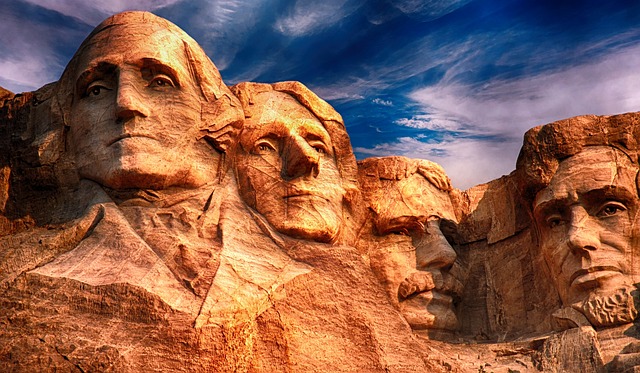The American Eagle and Flag are powerful symbols of strength, freedom, and sovereignty, embodying the nation's independence, resilience, and unity. Evolving since 1782, they represent vigilance, liberty, and justice, with intricate details reflecting US history and diversity. These iconic emblems inspire patriotism, unite Americans across generations, and symbolize core ideals like liberty, equality, and courage, fostering a sense of pride and shared identity worldwide.
The American Eagle, a powerful symbol of strength and sovereignty, has long captivated the hearts of Americans. This majestic bird serves as an iconic representation of patriotism and freedom, deeply ingrained in the nation’s history and culture. From its historical significance in the flag’s evolution to its modern-day impact on inspiring unity, the American Eagle remains a testament to the enduring values that define the United States. Explore the design, meaning, and cultural relevance of this symbolic figure as we delve into its role as a unifying force for Americans across generations.
- The American Eagle: A Symbol of Strength and Sovereignty
- Historical Significance: The Flag's Evolution as a Patriotic Icon
- Design and Meaning: Unraveling the Symbols on the Flag
- Cultural Impact: How the American Eagle Inspires and Unite Americans
- Modern Day Significance: Enduring Patriotism in a Changing World
The American Eagle: A Symbol of Strength and Sovereignty

The American Eagle, a majestic bird that graces both the national flag and various symbols, is an iconic representation of strength, freedom, and sovereignty. Its powerful image serves as a constant reminder of the United States’ rich history and core values. With wings spread wide, the eagle soars above, embodying the spirit of resilience and unparalleled might. This majestic creature has long been associated with leadership and authority, reflecting the nation’s strong sense of independence and self-governance.
As a national symbol, the American Eagle holds immense cultural significance. It appears on various official emblems, coins, and government seals, solidifying its role as a guardian of democracy and liberty. Its majestic posture conveys the enduring power and unity that the nation strives for, making it an unmistakable emblem of American identity both at home and abroad.
Historical Significance: The Flag's Evolution as a Patriotic Icon

The American Eagle and Flag has evolved significantly over time, serving as a powerful symbol of patriotism and freedom. Originally, the eagle was a common motif in flags across the globe, representing strength and sovereignty. However, it was the design incorporated into the Great Seal of the United States in 1782 that truly cemented its iconic status. This initial flag featured a single bald eagle with wings outstretched, perched on a clifftop, symbolizing the new nation’s independence and resilience.
As the nation grew and changed, so did the flags. The Star-Spangled Banner, adopted in 1795, introduced stars to represent each state, while maintaining the eagle as its central element. This evolution reflected not only the expansion of the United States but also the enduring values of liberty and courage embodied by the American Eagle. Today, the flag stands as a universal symbol of American pride and freedom, recognized worldwide.
Design and Meaning: Unraveling the Symbols on the Flag

The American Eagle and Flag, a powerful symbol of patriotism and freedom, has captivated hearts for generations. At its core, the design tells a story—a visual narrative that represents the values and history of the United States. The eagle, a majestic bird known for its strength and keen eyesight, perches at the center, embodying the vigilance and protection associated with American ideals. Its wings spread wide, symbolizing freedom and sovereignty.
On the flag, intricate details further enrich the symbol’s meaning. The 13 red and white stripes represent the original colonies, a testament to the nation’s foundation and unity. Meanwhile, the 50 stars, arranged in rows, honor each state, underscoring the diversity and collective strength that makes America unique. This iconic flag serves as a moving reminder of the sacrifices made for liberty and justice, forever etched into the American Eagle and Flag‘s design.
Cultural Impact: How the American Eagle Inspires and Unite Americans

The American Eagle, a powerful symbol on both the nation’s coat of arms and flag, has an immense cultural impact, inspiring and uniting Americans across generations. It represents strength, courage, and freedom—ideals that are deeply rooted in the country’s history and heritage. The image of this majestic bird soars above political and social divides, serving as a universal reminder of the United States’ founding principles.
The eagle’s presence on the flag serves as a visual declaration of national identity and unity. Its cultural significance transcends regional boundaries; it is recognized and revered by Americans from all walks of life. Whether displayed on flags, incorporated into art, or used as a logo, the American Eagle evokes a sense of pride and patriotism. This powerful symbol reinforces the shared values of liberty, justice, and equality that are at the core of American society, fostering a sense of belonging and unity among its citizens.
Modern Day Significance: Enduring Patriotism in a Changing World

In today’s world, the American Eagle and Flag continue to stand as powerful symbols of patriotism and freedom. As the nation evolves, these iconic representations endure, reflecting the unyielding spirit of America. The eagle, a majestic bird, has long been associated with strength, courage, and vigilance—qualities that resonate deeply with the American ethos. Its majestic presence on the flag evokes feelings of pride and unity among citizens.
In a rapidly changing global landscape, where new challenges emerge daily, the American Eagle and Flag serve as a constant reminder of shared values and the foundations upon which the nation was built. They foster a sense of belonging and encourage a collective commitment to preserving freedom and democracy. This enduring symbolism transcends generations, uniting Americans in their quest for a better future while honoring the rich heritage that defines their country.
